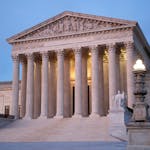Planning is everything. Last Sunday the Philadelphia Eagles demonstrated that well-worn wisdom with their stunning victory over the New England Patriots in Super Bowl LII.
So did the Minneapolis Police Department.
For nearly three years, the MPD carefully led the planning efforts for one of the most complex security undertakings in our country: hosting the Super Bowl.
The numbers alone are staggering. Our department was responsible for leading and implementing a plan that required cooperation with over 3,000 sworn officers from across 60 Minnesota jurisdictions and 40 federal agencies. Officers from Ely to Rochester joined the MPD to keep the roughly 125,000 visitors and Minneapolis residents safe.
In the lead-up to Super Bowl LII, 41 different public safety groups meticulously planned for every possible issue, from weather, to traffic and pedestrian safety, to acts of terrorism. And they met with stakeholders from our diverse communities to ensure those who planned to protest could do so safely.
We lived up to our Bold North reputation, with temperatures dropping as low as 4 degrees on game day. For the coldest Super Bowl in NFL history, our team had a plan. Minneapolis police made sure that community members experiencing homelessness were safe and protected from the elements. They also accounted for attendees. Super Bowl participants were prescreened indoors and off-site to minimize the risk of exposure to the extreme cold — a first for the event.
So after the final whistle blew and the last piece of confetti had been removed from the field, our Police Department wasn't in the news much. That's a good thing.
Here's why.
In Minneapolis' First Precinct, downtown where the game was played, there were 75 arrests between the start of Super Bowl Live and the start of Super Bowl Sunday. If you compare that same 10-day stretch with the year before, you'll find that there were actually 42 fewer arrests this year — with the Super Bowl in town. Crime decreased even with the record-setting infusion of visitors into our city.
Minneapolis stands on a proud history of civic engagement. We encourage people to exercise their First Amendment rights — it's woven into the very fabric of our city. Sunday made clear why that is. Our police worked deftly with about 30 constituency groups — including Black Visions Collective (the Minneapolis chapter of Black Lives Matter) and local unions — so protesters could make their voices heard while ensuring that transportation continued flowing safely and efficiently to and from downtown.
While managing security for one of the biggest sporting events on the planet, our police officers continued carrying out their regular duties with excellence. On Jan. 30, Minneapolis police, along with law enforcement officials from the University of Minnesota police, Minnesota State Patrol, Dakota County Sheriff's Office, Ramsey County Sheriff's Office, East Metro SWAT and the Brooklyn Park police, negotiated the end to a two-day standoff at a hotel on the University of Minnesota campus. They did so without firing a shot.
On the world stage, Minneapolis shined. The trains ran on time. The peace was kept. America saw the very best of what our city has to offer. Nothing was left to chance. And as our officers showed, planning is everything.
Jacob Frey is mayor of Minneapolis. Medaria Arradondo is chief of the Minneapolis Police Department.
![The sun rises above US Bank Stadium Friday, January 19, 2018 in Minneapolis, MN. ] ELIZABETH FLORES ï liz.flores@startribune.com](https://arc.stimg.co/startribunemedia/XON5VEOR4OAWNPBPLWG4UVJUAY.jpg?fit=crop&crop=faces&w=550&&auto=format)



